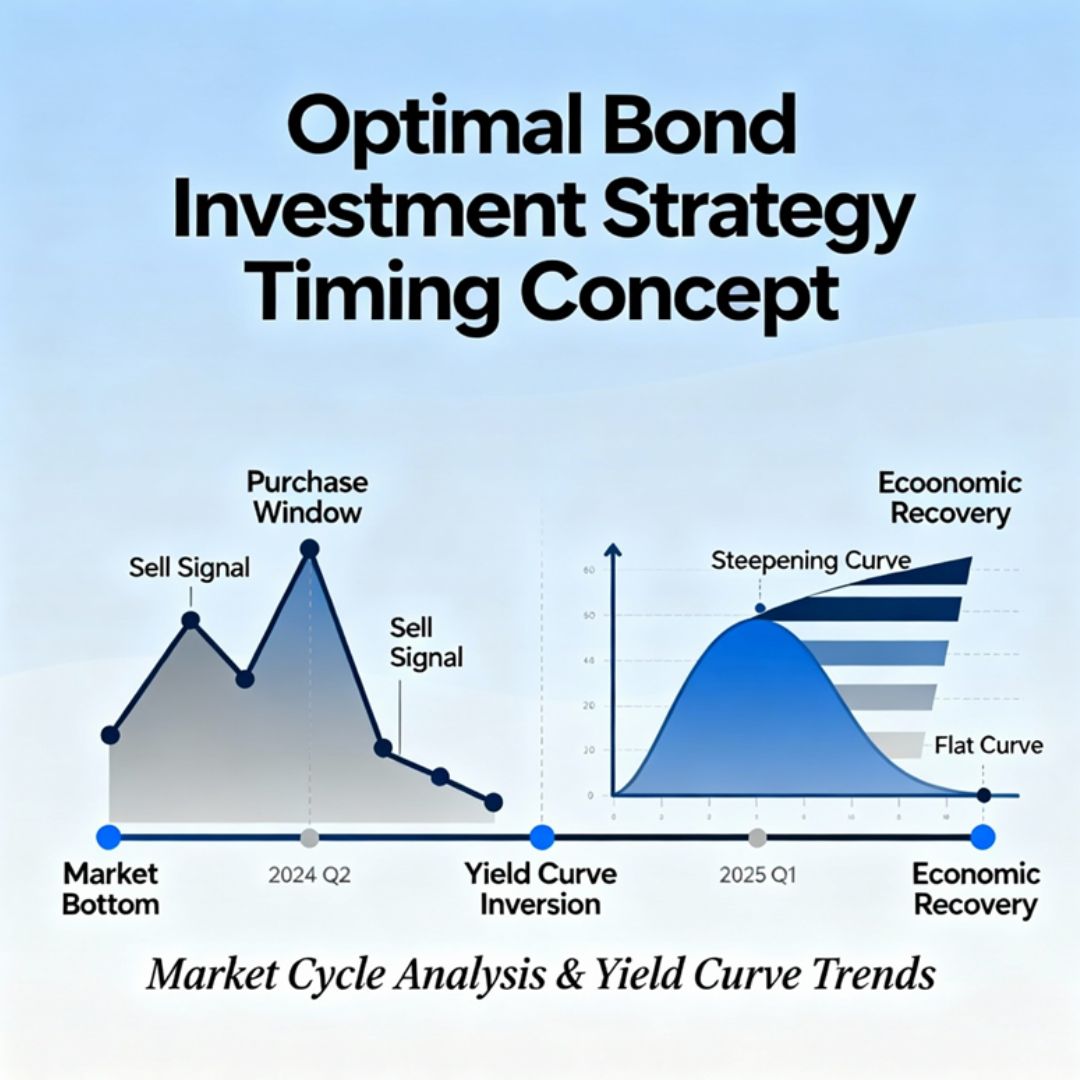The Indian fixed income landscape is experiencing a transformative phase in October 2025, marked by unprecedented monetary easing, benign inflation, and robust corporate fundamentals.
For discerning investors seeking to optimize their bond portfolios, the 2-5 year corporate bond segment has emerged as the undisputed sweet spot, offering an compelling combination of attractive yields, manageable duration risk, and superior risk-adjusted returns.
The Monetary Policy Backdrop: A Foundation for Fixed Income Success
India’s monetary policy trajectory has undergone a dramatic shift since February 2025, with the Reserve Bank of India implementing an aggressive 100 basis points rate cut cycle that has fundamentally altered the fixed income investment landscape. The repo rate currently stands at 5.50%, following a significant 50 basis points reduction in June 2025 that surprised market participants and signalled the central bank’s commitment to supporting economic growth.
This easing cycle represents one of the most substantial monetary accommodations in recent years, driven by several compelling macroeconomic factors. Retail inflation plummeted to a remarkable 1.55% in July 2025, marking the lowest level in 98 months and providing the RBI with unprecedented policy flexibility. Core inflation has similarly moderated to 3.94%, falling below the 4% threshold for the first time in six months, while food inflation touched a 78-month low of -1.76%.
The central bank’s shift from an “accommodative” to “neutral” stance following the June rate cut reflects a more data-dependent approach going forward. However, market consensus suggests that the RBI is likely to maintain rates at current levels through October 2025, with bankers and economists ruling out immediate further cuts while expecting potentially one more reduction later in FY26.
Corporate Bond Market Dynamics: Record Growth and Structural Strength
India’s corporate bond market has achieved unprecedented scale and sophistication, reaching ₹51.58 trillion as of March 2025, representing approximately 18% of GDP. This substantial growth trajectory has been supported by record-high issuances of ₹9.9 trillion in FY25, surpassing the previous year’s ₹8.6 trillion and establishing new benchmarks for corporate funding through capital markets.
The market’s structural evolution reflects a fundamental shift in corporate financing patterns, with companies increasingly turning to bond markets as banks adopt more cautious lending standards and seek to optimize their balance sheets. This trend has been particularly pronounced in the post-COVID environment, where improved corporate creditworthiness and stronger governance frameworks have enabled better access to capital markets at competitive rates.
Corporate bond spreads currently offer attractive premiums over government securities, with 2-year AAA papers trading at approximately 87 basis points over comparable G-Secs, 3-year papers at 86 basis points, and 5-year securities at 80 basis points. These spreads represent compelling value propositions for investors, particularly when considered alongside the limited duration risk exposure in the 2-5 year segment.
The 2-5 Year Duration Sweet Spot: Optimal Risk-Return Profile
The 2-5 year corporate bond segment has emerged as the optimal duration strategy for October 2025, offering investors a unique combination of attractive yields, limited interest rate sensitivity, and superior liquidity characteristics. This positioning reflects several key structural and tactical advantages that make these papers particularly compelling in the current market environment.
Yield Optimization: Current AAA-rated corporate bonds in the 2-5 year segment offer yields ranging from 6.75% to 6.80%, providing meaningful income generation while maintaining reasonable credit quality standards. These yields represent attractive real returns when adjusted for the current low inflation environment, delivering substantial value compared to traditional fixed deposit alternatives.
Duration Risk Management: The 2-5 year maturity profile strikes an optimal balance between yield enhancement and interest rate risk mitigation. Unlike longer-duration papers that remain vulnerable to significant price volatility from yield curve movements, the intermediate segment provides more stable price performance while still offering meaningful sensitivity to potential rate cuts.
Liquidity Premium: Corporate bonds in the 2-5 year segment typically enjoy superior secondary market liquidity compared to longer-dated papers, reflecting the concentration of institutional investor preferences and the higher turnover rates in this maturity bucket. This liquidity advantage becomes particularly valuable during periods of market stress or when tactical portfolio adjustments are required.
Spread Compression Potential: Historical analysis suggests that spreads in the 2-5 year AAA corporate bond segment tend to compress most significantly during rate cutting cycles, as institutional investors chase higher-yielding paper while maintaining conservative duration profiles. This dynamic creates potential for capital appreciation beyond the carry component of total returns.
Institutional Demand Drivers and Market Structure
The robust institutional demand for 2-5 year corporate bonds reflects the segment’s alignment with the investment mandates and risk management frameworks of India’s major fixed income investors. Banks, seeking to optimize their Available for Sale (AFS) and Held for Trading (HFT) portfolios, find the duration profile particularly attractive for Asset-Liability Management (ALM) purposes while generating superior yields compared to government securities.
Insurance companies and pension funds have similarly increased their allocations to this segment, recognizing the optimal balance between yield generation and capital preservation requirements. The recent regulatory clarifications regarding investment norms and the ongoing development of bond market infrastructure have further enhanced institutional participation in corporate debt markets.
The inclusion of Indian bonds in major global indices, including JP Morgan’s GBI-EM index with Bloomberg and FTSE inclusion expected soon, is projected to drive $30-40 billion in annual passive inflows, providing additional structural support for the market.
Technology and Market Access: The Altifi Revolution
The democratization of bond investing in India has been significantly accelerated by innovative digital platforms, with Altifi emerging as a leading example of how technology can bridge the traditional gap between institutional and retail fixed income markets. As a retail debt investment platform from Northern Arc Capital, Altifi has created an ecosystem that enables individual investors and small corporates to access fixed income instruments that were previously exclusive to institutional participants.
The emergence of platforms like Altifi addresses a critical market gap, enabling broader participation in India’s corporate bond market while maintaining appropriate investor protection standards. This technological evolution supports the overall market development thesis and creates additional demand dynamics that benefit the 2-5 year corporate bond segment.
Risk Considerations and Portfolio Integration
While the 2-5 year corporate bond strategy offers compelling risk-adjusted returns, investors must remain cognizant of several key risk factors that could impact performance. Credit risk, while mitigated through focus on AAA-rated papers, remains present and requires ongoing monitoring of issuer fundamentals and sector dynamics.
Interest rate risk, though limited in the intermediate duration segment, could still impact portfolio values during periods of significant yield curve movements or unexpected policy shifts. Investors should maintain appropriate diversification across issuers, sectors, and maturity profiles to optimize risk-adjusted returns.
Liquidity risk, while generally low in the 2-5 year AAA segment, could emerge during periods of market stress or significant FPI outflows. Maintaining a core allocation supplemented by tactical positions allows for both stability and flexibility in portfolio management.
Implementation Strategy and Tactical Considerations
For investors seeking to implement a 2-5 year corporate bond strategy in October 2025, several tactical considerations merit attention. The current yield levels provide attractive entry points, particularly for investors with medium-term investment horizons who can capture both carry and potential capital appreciation from spread compression.
Portfolio construction should emphasize high-quality AAA and AA+ rated papers while maintaining diversification across sectors and issuers. Financial services, infrastructure, and consumer-focused corporates offer different risk-return profiles within the same credit quality framework, enabling customized exposure based on individual investor preferences and market views.
Timing considerations favor gradual portfolio building rather than concentrated investments, allowing investors to benefit from any market volatility while avoiding concentration risk. The stable interest rate environment and predictable policy framework support this measured approach to portfolio construction.
Future Outlook and Strategic Positioning
Looking beyond October 2025, the structural factors supporting India’s corporate bond market appear robust and sustainable. The ongoing development of market infrastructure, regulatory enhancements, and technology-driven accessibility improvements create a foundation for continued growth and institutionalisation.
The 2-5 year duration strategy aligns well with this long-term trajectory while providing tactical flexibility to adapt to changing market conditions. As India’s economy continues its growth trajectory and corporate sector fundamentals remain strong, the intermediate duration corporate bond segment should continue offering attractive risk-adjusted returns for discerning fixed income investors.
The convergence of supportive monetary policy, robust corporate fundamentals, technological innovation through platforms like Altifi, and structural market development creates an compelling investment environment for corporate bonds. For investors seeking to optimize their fixed income allocations in October 2025, the 2-5 year corporate bond segment represents not just a tactical opportunity, but a strategic positioning for the evolving Indian capital markets landscape.
This unique confluence of factors-from the RBI’s accommodative policy stance and record-low inflation to the unprecedented scale of corporate bond issuances and the democratization of market access through digital platforms-establishes the 2-5 year corporate bond segment as October’s definitive sweet spot for sophisticated fixed income investing in India.











